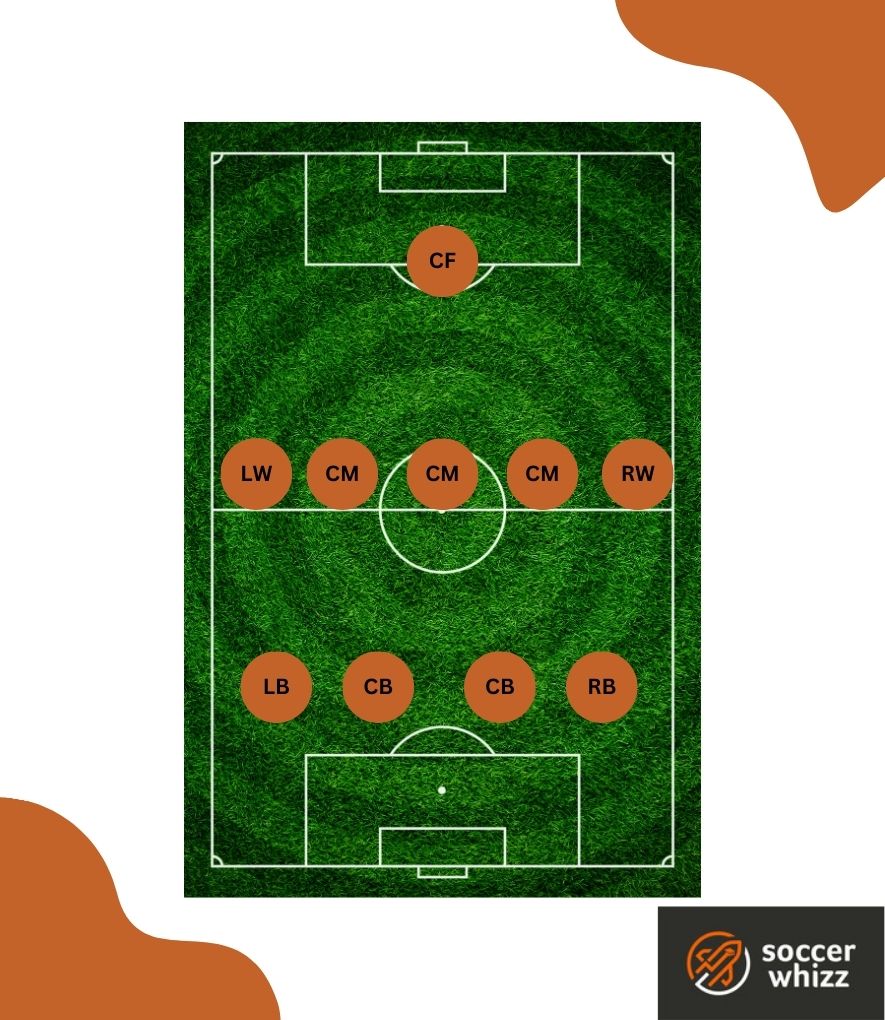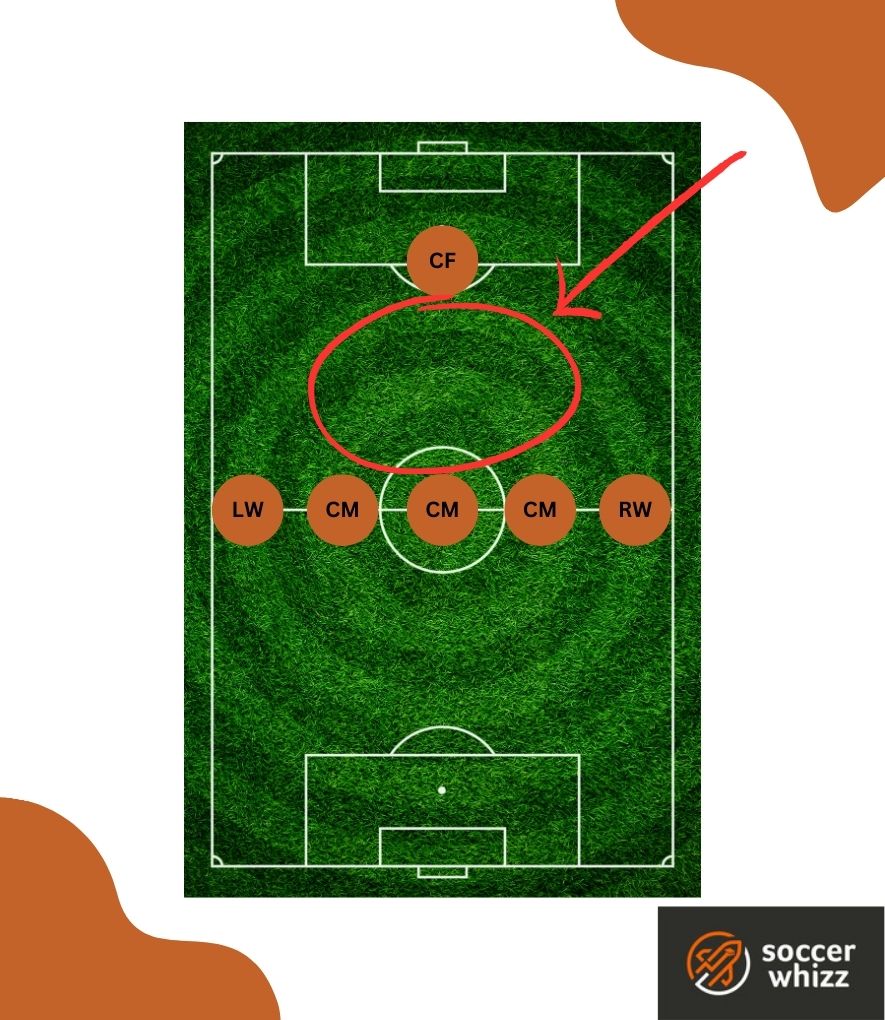Unfolding on the canvas of the soccer pitch, formations shape the very essence of a team’s tactical identity.
Among the multitude of strategies, the 4-5-1 formation stands tall as a versatile and captivating system that has graced the world’s most prestigious leagues and competitions.
With five midfielders providing a solid foundation and support for a lone striker, this tactical approach marries defensive resilience with offensive ingenuity.
In this article, we delve into the intricacies of the 4-5-1 formation, exploring its historical evolution, key principles, tactical nuances, and the reasons behind its allure for modern coaches.
- How do you play a 4-5-1 formation in soccer?
- What are the strengths of the 4-5-1 formation?
- What are the weaknesses of the 4-5-1 formation?
- Which managers typically employ a 4-5-1 formation?
- Is there an effective way to break down a 4-5-1 system?
- Is the 4-5-1 formation conservative or aggressive?
- What's the hardest working position in this formation?
- Concluding thoughts
How do you play a 4-5-1 formation in soccer?
The 4-5-1 formation is composed of a solid backline of four defenders, a midfield comprising five players, and a lone striker leading the attack.

The defensive line usually adopts a flat structure, with right-back and left-back providing crucial support to the center-backs flanked between them.
The lone striker takes on significant responsibilities beyond scoring goals, including hold-up play, pressing opponents, showcasing physicality, and making runs into channels.
A key characteristic of the typical 4-5-1 formation is its emphasis on width.
Central midfielders form a relatively flat trio, entrusted with defensive duties to shield the back four, intercept opposition attacks, and maintain possession.
Within this setup, one or two midfielders tend to focus on defensive tasks, while another is tasked with providing creative flair.
These central midfielders facilitate the ball’s transition to the flanks, where wingers play a crucial role in launching attacks and delivering crosses into the opposition’s penalty area.
The strength of the 4-5-1 system lies in its ability to create attacking opportunities by spreading players effectively across the midfield.
Encouraging wide players to support the lone striker becomes paramount, as they must advance forward and exploit space on the flanks.
This strategic approach allows wingers in a 4-5-1 formation to fully support their central forward, contributing to a cohesive and potent attacking force.
What are the strengths of the 4-5-1 formation?
The 4-5-1 formation offers a wide-ranging midfield that spans the entire width of the pitch, facilitating swift ball distribution and seamless switches of play to catch opponents off guard.
Unlike formations like 4-2-3-1, which often emphasize possession-based football, the 4-5-1 provides teams with diverse attacking options.
Teams can employ wide crosses from the flanks or opt for a more direct approach, bypassing the opposition midfield to quickly feed the lone striker.
Moreover, coaches have the flexibility to adapt their midfield width according to their tactical preferences.
By positioning wingers slightly more centrally, they can transform them into inside forwards, capable of creating numerical advantages in central midfield areas and fostering overloads to break down opposing defenses effectively.
What are the weaknesses of the 4-5-1 formation?
The striker shoulders a significant burden in this formation, as they are not only expected to score goals but also required to press the opposition’s defense, often in isolation.
When they do win possession, immediate support may be lacking, making ball-holding skills essential to stall attacks until teammates arrive to assist.

Isolation poses a challenge, and the responsibility often falls on the wide midfielders or wingers in the 4-5-1 system to offer support in advanced positions.
However, if these players prioritize attacking without maintaining defensive duties, it can create vulnerable gaps in the team’s defensive structure, presenting a potential weakness of the 4-5-1 shape.
Moreover, the midfielders in a 4-5-1 formation must possess a diverse skill set, including strong passing abilities, keen vision, endurance, and defensive prowess.
Meeting all these requirements is critical to ensure the success of this tactical system.
Which managers typically employ a 4-5-1 formation?
Here are three managers who’ve used this formation to varying degrees of success in the past:
1. Jose Mourinho
The 4-5-1 formation proved to be a key element of Jose Mourinho’s dominant Chelsea team during the mid-2000s.

Throughout the 2004/2005 season, Mourinho’s Chelsea displayed their prowess, clinching the Premier League title in a resoundingly efficient manner, with a remarkable concession of only 15 goals throughout the entire campaign.
2. Carlo Ancelotti
Among the many coaches who have harnessed the power of wing play during their tenure at German powerhouse Bayern Munich, Ancelotti stands out as one of the tacticians who utilized this strategy effectively.

Throughout the lengthy careers of Arjen Robben and Franck Ribery with the club, the 4-5-1 formation was frequently employed.
Though often categorized as a 4-3-3 shape, this tactical setup placed significant emphasis on wingers delivering precise and incisive crosses.
During the triumphant 2016-17 title-winning campaign, Bayern Munich found the net 12 times from crosses, marking the highest in the league.
3. Alex McLeish
What sets McLeish apart from Mourinho is the way he approached the formation the latter used.

Mourinho adeptly selected a formation that suited the players and the club’s needs, while McLeish seemed to rely on it due to his defensive and rigid tendencies.
During the 2011-2012 season at Villa Park, the 4-5-1 formation showcased a lack of belief in the players’ abilities and seemed to prioritize a grinding and defensive approach.
Is there an effective way to break down a 4-5-1 system?
While prioritizing defensive stability is crucial, breaking down a 4-5-1 system requires a strategic approach that involves flooding attacking areas with a multitude of players.
By outnumbering the opposition’s back four, teams can create numerous scoring opportunities and force their opponents’ midfielders to retreat, leaving their lone striker isolated.
Managing a solitary striker becomes feasible with just two center-backs, granting full-backs the freedom to surge forward and contribute to the attack.
This, in turn, compels the opposition wingers to assume defensive responsibilities.
To achieve this, the 4-3-3 formation proves to be an optimal choice.
A single defensive pivot flanked by two dynamic number 8’s can effectively control the midfield battle, while high-intensity full-backs can venture forward, offer width, and nullify the strengths of the 4-5-1 formation in wide areas.
Implementing these tactics hinges on having robust and speedy full-backs, but if the team possesses such assets, the strategy can yield fruitful results.
Is the 4-5-1 formation conservative or aggressive?
Commonly perceived as a defensive formation, the 4-5-1 shape places significant emphasis on defensive solidity rather than strong attacking intent.
The presence of a lone striker, combined with a typically flat midfield trio and back four, contributes to the defensive nature of this tactical setup.
Consequently, when facing a team utilizing the 4-5-1 formation, it’s reasonable to assume that their attacking prowess might not be their greatest strength.
What’s the hardest working position in this formation?
In the 4-5-1 formation, the central midfield position is often considered the hardest working position.
The two central midfielders play a crucial role in providing defensive support to the backline, breaking up opposition attacks, and maintaining possession.
We even have another article on the blog about the soccer position that covers the most distance during competitive games, which supports the aforementioned statement.
Anyway, the midfielders are responsible for covering large areas of the pitch, both in defense and during transitions to attack.
Additionally, they are required to be versatile players, capable of contributing both defensively and offensively, making runs forward when necessary while also tracking back to fulfill defensive duties.
Their ability to cover ground, read the game, and maintain high levels of stamina and work rate is essential for the success of the team in this formation.
Concluding thoughts
From the disciplined defensive structure to the fluidity of attacking options, the 4-5-1 formation continues to shape the modern game, evolving with the ever-changing landscape of soccer.
As teams continue to innovate and explore new tactics, the enduring appeal of the 4-5-1 formation ensures it will remain a celebrated and influential tactical approach for years to come.
So, whether employed to suffocate opponents’ attacks or to unleash devastating counter-attacks, the 4-5-1 formation will continue to captivate coaches, players, and fans alike, highlighting the artistry and strategic brilliance inherent in the beautiful game of soccer.
If you want to learn more about the different soccer formations, have a look at our separate posts discussing:
If you enjoy the content that I create and would like to buy me a coffee, then I’d really appreciate it!
Any money that I earn through this donation will be re-invested into more content for this website.
Additionally, by sending in a donation you’ll also receive a copy of my recently released 190+ page eBook on Soccer Ball Care, as well as be subscribed to our mailing list where you’ll be regularly informed on the latest developments concerning the Soccer Whizz blog.
- Future Icons: Europe’s Emerging Midfield Maestros Set for Glory - December 4, 2023
- Kickstarting a Revolution: How Soccer Transformed the United States Over the Last Four Years - October 7, 2023
- 4-1-4-1 Soccer Formation [Analysis] - September 23, 2023

